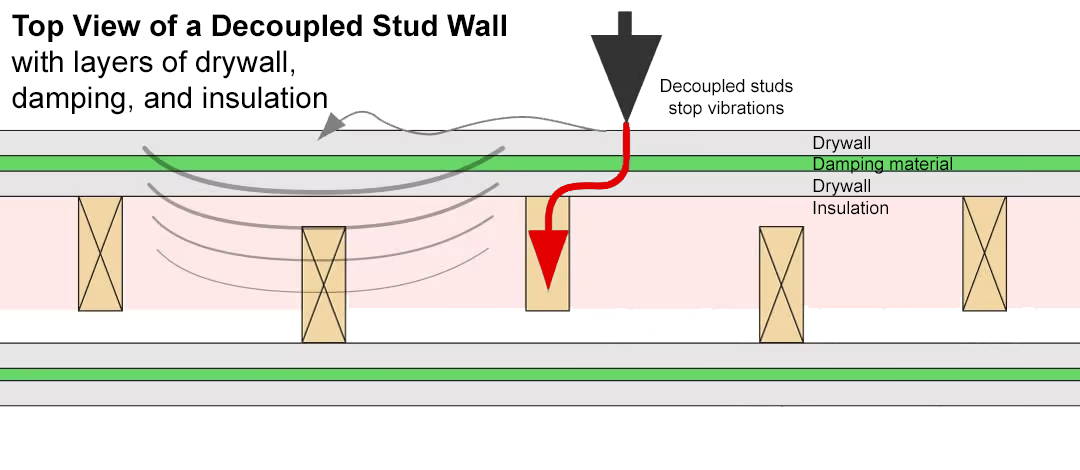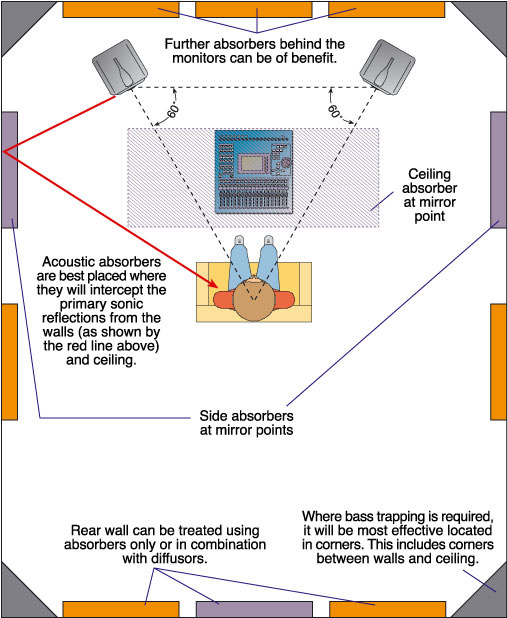What is an Acoustic Environment?
Our acoustic environment is integral to how we function in everyday life. It affects our moods, our health, and our ability to focus and communicate. It’s no question that most people find the acoustics in a forest to be more pleasant than those in an office, and this is due to the acoustical properties of those environments. In a forest, trees and foliage diffuse and absorb sound and create a tranquil acoustic environment. In an office building, parallel walls and hard surfaces cause sound to build up, creating a chaotic mix of noise as all the sounds in a space reflect off the walls and ceiling and collide with each other.
What is the difference between Soundproofing and Acoustic Treatment?
Soundproofing and acoustic treatment are two very different processes that are often confused with each other. Soundproofing is the process of treating an indoor environment to prevent sound and vibration from leaving or entering. If you have a problem with unwanted noise coming in or going out of your environment, that’s a sound proofing issue.
Have you ever been to a restaurant or bar where the sound of conversations in the room was so loud that you couldn’t hear clearly and had to keep talking louder to be heard? That’s an acoustic treatment issue. Acoustic treatment is the process of adding materials to absorb or reflect sound inside a space and improve its acoustic properties. While acoustic treatment won’t fix noise going from one room to another like sound proofing, it will reduce the acoustic energy and sound bouncing around within a space to create a better listening experience.
What is Soundproofing and how does it work?
Soundproofing is stopping sound from going from one place to another. It requires the addition of mass to work effectively, and this is due to the physics of sound. Sound travels as waves, and lower sounds make larger waves than higher pitched sounds. Bass notes tend to be transmitted both through the air and as structural vibration, while high frequencies tend to be primarily airborne.

Sound proofing involves building thick walls with layers of drywall, damping materials like mass-loaded vinyl, and insulation to block, dampen, and absorb sound waves. It also involves sealing air gaps and decoupling the walls, floors, and ceiling from the building structure to reduce low frequency vibrations escaping. Due to the materials and labor costs involved, effective sound proofing can easily become very expensive, and can be difficult to achieve.
What is Acoustic Treatment and how does it work?
Acoustic treatment uses materials with a high Noise Reduction Coefficient (NRC) to improve the clarity and intelligibility of sound within an environment. Proper acoustic treatment involves treating the inner surfaces of an environment with sound absorbing materials to absorb reflections or diffuse sound. When done right, acoustic treatment can turn a harsh sounding room with poor midrange definition and boomy bass response into one that sounds clear and present at all frequencies and sound levels.
Acoustic treatment is effective in fixing a variety of issues including reverberation, echoes, standing waves, and modal ringing at low frequencies. Compared to soundproofing, acoustic treatment is a simpler and more cost effective process that can create better environments for conversation and listening to music, and increase the usability and beauty of a space.
